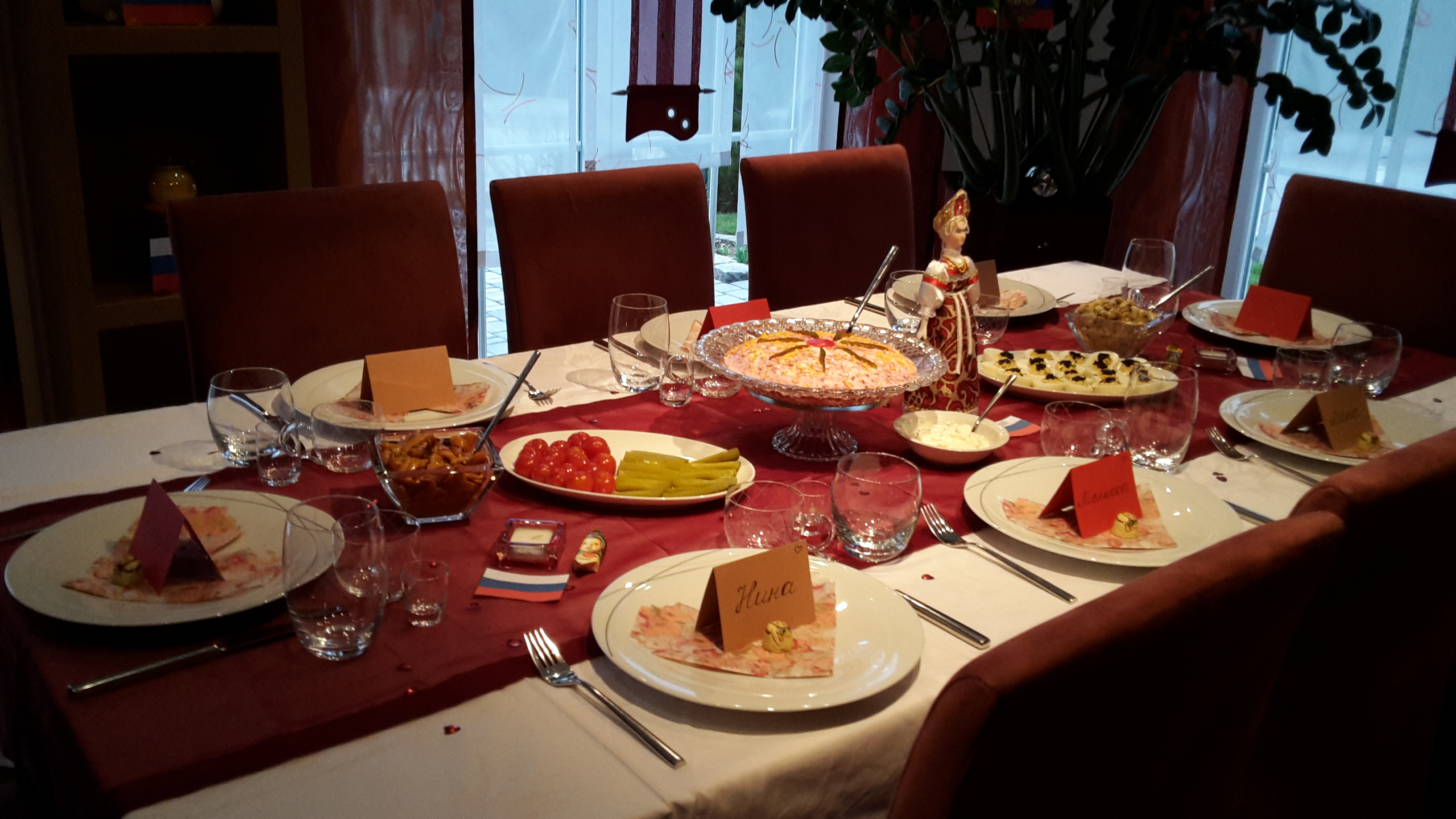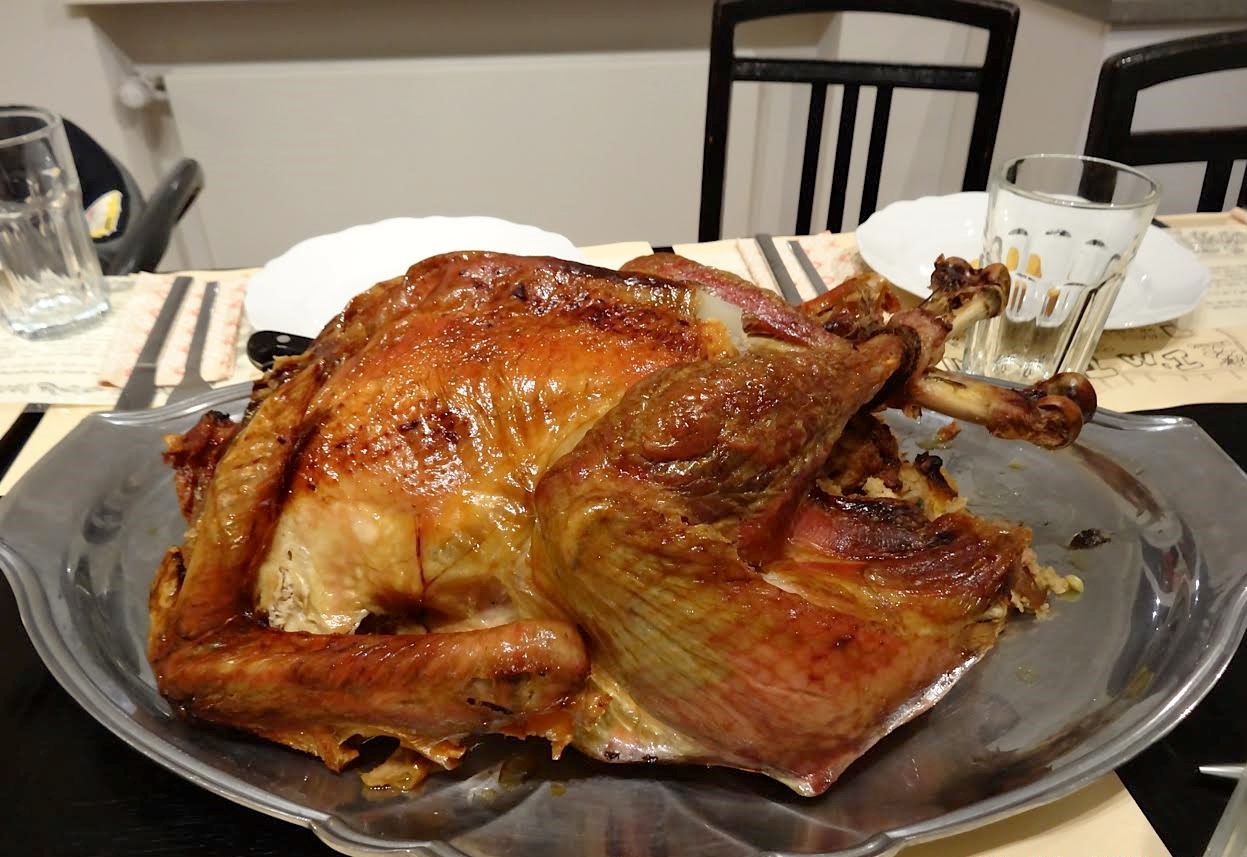Coronavirus has hit us all very hard. It started with a couple of cases in China and, suddenly, the whole world was on lockdown. Among other things, restaurants had to close their doors overnight. I wanted to know what has changed for the staff of restaurants and bars, so, I went downtown to talk to an employee of the Enchilada. Her name is Lisa and she has been working as a waitress there for one and a half years now. Due to the loosening of regulations for social distancing, we were able to have a face-to-face interview in the restaurant.
For those of you who don´t know the Enchilada, here’s a quick briefing: The Enchilada is a Mexican restaurant and bar in Augsburg’s city centre. It’s a member of the Enchilada Franchise Group, just like the Ratskeller, Dean & Davids, Aposto, and many more.
What did a usual day of work look like before Corona? How many people were here? How many employees?
That depends on the day. On business days, there were only up to three waiters, one or two bartenders, and three people in the kitchen. The weekends were a whole different situation: we have seven different areas in the restaurant itself and ideally, there is a waiter for every area. On top of that, there were five or six bartenders. Even in the kitchen, we added an extra dishwasher. So, is a lot happening here on weekends.
Ok, thank you for that insight. Let´s talk about the present. A lot has changed, obviously. Which precautionary measures did you take, especially in the beginning?
Everything happened so fast. I was working on Saturday and by Tuesday we had to shut down completely. None of us could attend to work for four weeks. Our boss managed all the orders via Boxbote together with just one cook. After a while, he decided to join Lieferando, and customers could book their meals over the phone and fetch them later. From that moment forward we had one additional waiter in here – two on the weekends – and three people in the kitchen. We’ve also changed our business hours: normally, they would be from 6 pm until 1 am, but now we work in two shifts. One from 11 am until 2 pm and another one from 5 pm until 10 pm.
How was the mood among the employees, especially when you weren´t going to work? Did you know how it would all turn out?
Right at the beginning when we couldn´t do anything – not even leave the house – we met on Zoom. As nobody knew how the whole situation would develop, we were a bit worried. I can´t speak for my colleagues but I was really concerned after a while, especially after the situation got a little bit out of hand and the media reports went crazy. But now I work on a regular basis – although it´s not as frequent as it used to be – and I am grateful for that. Because we met on Zoom, nobody was really intimidated by the whole situation.
So, your boss didn´t have to fire anyone? They´re all still here?
Yes, he didn´t have to. We made it through fully staffed.
That´s very good. Well, Lisa, I heard that the Enchilada gives away vouchers for customers who fetch their food all by themselves. Is that correct?
Exactly.
Are there any other offers?
We’ve created some packages for Lieferando. Those are whole menus the costumers can order. On Boxbote we put up three different cocktail packages. On top of that, we started a prize game and put a ticket in every bag. Right at the beginning, we had some complimentary gifts, but they were gone pretty fast.
Regarding the cocktails: I can´t quite figure out how it works. Aren´t cocktails supposed to be iced? Doesn´t that ice melt until it reaches the customer?
That works well. Lieferando’s and Boxbote’s radius for delivery isn´t that big. Especially for longer distances, Lieferando goes by car. And we only finish creating the cocktails when the food is ready, and the delivery man is in the restaurant.
There were no complaints about melted Margaritas?
Not that I would know of. As I said, we finish them last and from there on everything should happen very fast.
Ok, we´re about to come towards the end of this interview. Slowly but steadily restaurants get to open again. What precautions are going to be made? Will there be a bouncer? Do you know anything about that?
I know a little bit. For a long time, our boss just wanted to wait because there were new restrictions every second day. But now we know more. We had a bouncer on the weekends even before Corona. On top of that, we have to check IDs because – from what it looks like – only two households are allowed to meet. But as the number of people at one table is limited to four, we need to check if they´re really just from two different households. As I said, there will be a bouncer on weekends. If there are people sitting at the tables outside, they don´t need to wear masks. But as soon as they get up, go to the toilet or even just go inside the restaurant, they have to put them on. Plus, there always has to be enough distance between costumers at different tables. All employees must slip on their masks just like in any other business right now.
Does the mask bother you?
It’s not the end of the world, but it is exhausting. The employees in the kitchen have a hard time understanding the point of it all. And I think even our costumers will have trouble picking up what we said. But, like I said, it isn’t tragic. As long as I can work, I am happy.
Ok. So, now to my last question: What did you learn for the future? Do you may keep any of your innovations for the long term?
We will definitely stay on Lieferando for a while. Plus, we will have different business hours. We used to open at 6 pm. Now we will be accessible for you at 11 am so people who work in the area can have their lunch break here. Until 8 pm we will grant access to the outdoor area. Afterward, we will stay in the restaurant for two more hours to take care of the orders from Lieferando and Boxbote.
Lovely. We’ve now reached the end of our interview. Thank you very much, Lisa. I wish you all the best.
Thank you.
I talked to Lisa off record for a while after the interview and she told me that she really looks forward to meeting some costumers again at the restaurant and interact with them. The outdoor area of the restaurant is very inviting and – although it is in the city centre – very quiet. So, you should definitely check it out.
The interview took place at the end of May, so some of the information may be outdated by the time you’re reading this article.
author: Celine Bohner


 Let the cooking adventures begin!
Let the cooking adventures begin!




 Can you remember playing Yu Gi Oh! or watching Pokemon, Naruto or Biene Maya after school? Known as the Japanese interpretation of comics and their animated version, anime and manga become famous in the 70s in Germany. Despite massive criticism of the violence by some people, it seems manga and anime are made for kids. However, only some anime are just for kids because there are topics and stories for all ages. While Biene Maya and Pokemon try to teach kids friendship, loyalty and honesty, others are meant for grownups and tell us something about our sometimes harsh and cruel world. They‘re very important methods for teaching values.
Can you remember playing Yu Gi Oh! or watching Pokemon, Naruto or Biene Maya after school? Known as the Japanese interpretation of comics and their animated version, anime and manga become famous in the 70s in Germany. Despite massive criticism of the violence by some people, it seems manga and anime are made for kids. However, only some anime are just for kids because there are topics and stories for all ages. While Biene Maya and Pokemon try to teach kids friendship, loyalty and honesty, others are meant for grownups and tell us something about our sometimes harsh and cruel world. They‘re very important methods for teaching values. to eat dangerous things like fugo (pufferfish) and awabi (ear shells).If you go to Japan, you won’t find many restaurants serving this kind of food. Only a few selected cooks with a special qualification are allowed to serve these dishes. Apart from this, the most famous dishes are donburi, rice with a variety of toppings and karê-raisu (curry with rice).
to eat dangerous things like fugo (pufferfish) and awabi (ear shells).If you go to Japan, you won’t find many restaurants serving this kind of food. Only a few selected cooks with a special qualification are allowed to serve these dishes. Apart from this, the most famous dishes are donburi, rice with a variety of toppings and karê-raisu (curry with rice). So, clichés sometimes have a core of truth, but in order to tell the differences between the truth and generalisations, it might be a good idea to travel to different places. Every single country is uniquein its own way – datte bayo!
So, clichés sometimes have a core of truth, but in order to tell the differences between the truth and generalisations, it might be a good idea to travel to different places. Every single country is uniquein its own way – datte bayo!
 The spirit of Thanksgiving has endured throughout the years and has made it one of the most important holidays in the USA.
The spirit of Thanksgiving has endured throughout the years and has made it one of the most important holidays in the USA. Slowly but surely the house fills; family first, to help with cleaning up and laying the table and then the friends arrive around five o’clock. Everybody mingles. The whole house smells amazing. We’re all starving since we haven’t eaten much during the day in order to have enough space in our stomachs for the feast. Finally we gather around the beautifully laid-out dinner table and say grace.
Slowly but surely the house fills; family first, to help with cleaning up and laying the table and then the friends arrive around five o’clock. Everybody mingles. The whole house smells amazing. We’re all starving since we haven’t eaten much during the day in order to have enough space in our stomachs for the feast. Finally we gather around the beautifully laid-out dinner table and say grace. Having eaten far too much, we start emptying the table, put the leftovers in containers to go, and pick off the last pieces of the turkey meat for turkey sandwiches the next day. Before we get ready for the sweet finale, we retell the story of the first Thanksgiving or we take a moment and write down what we are thankful for. Then it is time to enjoy the pies.
Having eaten far too much, we start emptying the table, put the leftovers in containers to go, and pick off the last pieces of the turkey meat for turkey sandwiches the next day. Before we get ready for the sweet finale, we retell the story of the first Thanksgiving or we take a moment and write down what we are thankful for. Then it is time to enjoy the pies.
 ave never been to a sushi place or Japanese restaurant at least once in their lifetime. The colorful rice rolls have become more and more popular over the past years, as the vast offer of different restaurants in Augsburg alone suggests! Japanese food such as sushi, just to name one of the many different and delicious dishes Japanese cuisine has to offer, also represents a part of Japanese culture. If you not only want to show respect this, but also the effort the itamae (the sushi chef) is putting into your dish, it’s important to eat it the way it’s supposed to be eaten – otherwise you might come across as a rude gaijin (jap. 外人, lit. translates to “person from outside”, “outsider”). The word has a very strong negative connotation and has been used to describe non-Japanese people, especially western people. Today, though, it’s being replaced by the more formal gaikokujin (jap. 外国人, “person from a foreign country”).
ave never been to a sushi place or Japanese restaurant at least once in their lifetime. The colorful rice rolls have become more and more popular over the past years, as the vast offer of different restaurants in Augsburg alone suggests! Japanese food such as sushi, just to name one of the many different and delicious dishes Japanese cuisine has to offer, also represents a part of Japanese culture. If you not only want to show respect this, but also the effort the itamae (the sushi chef) is putting into your dish, it’s important to eat it the way it’s supposed to be eaten – otherwise you might come across as a rude gaijin (jap. 外人, lit. translates to “person from outside”, “outsider”). The word has a very strong negative connotation and has been used to describe non-Japanese people, especially western people. Today, though, it’s being replaced by the more formal gaikokujin (jap. 外国人, “person from a foreign country”).